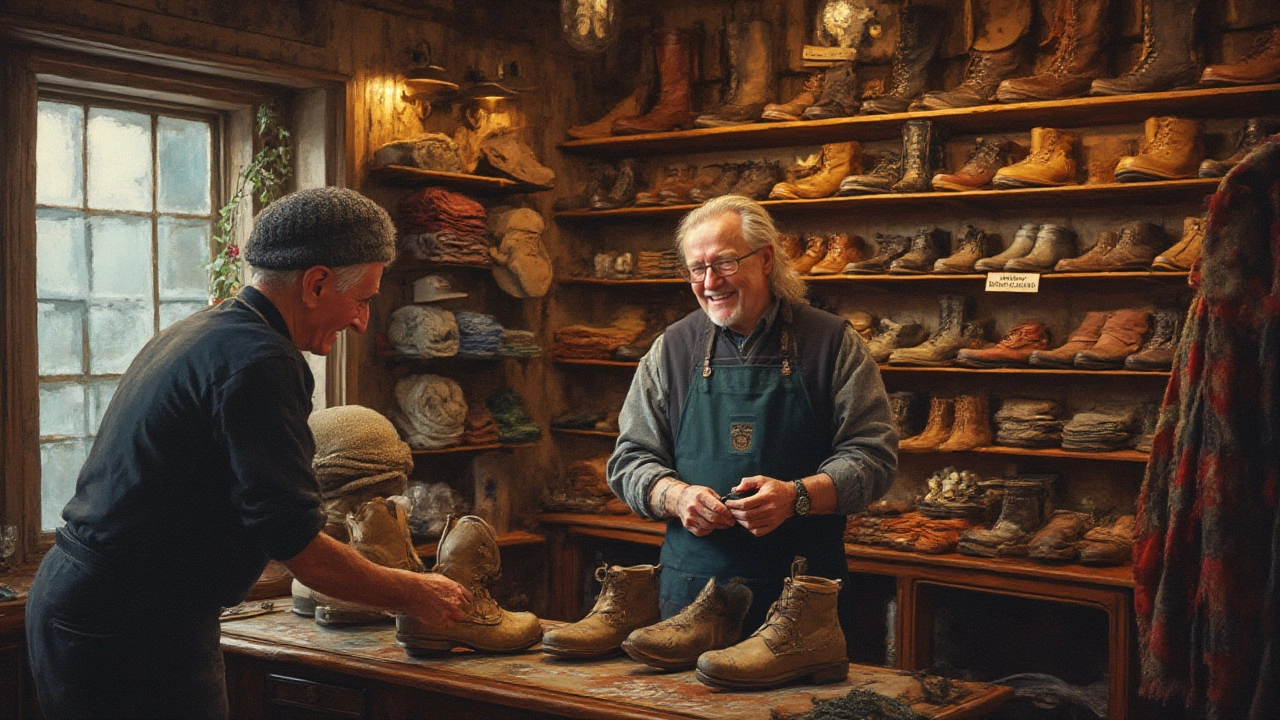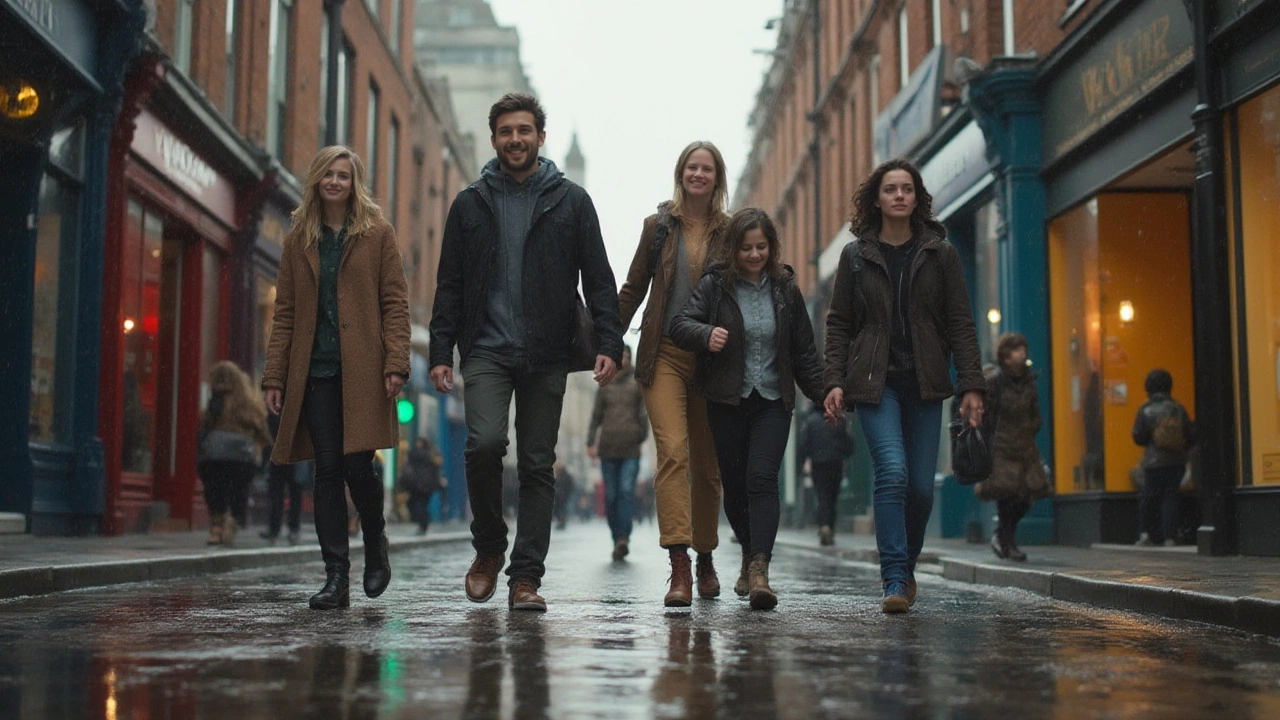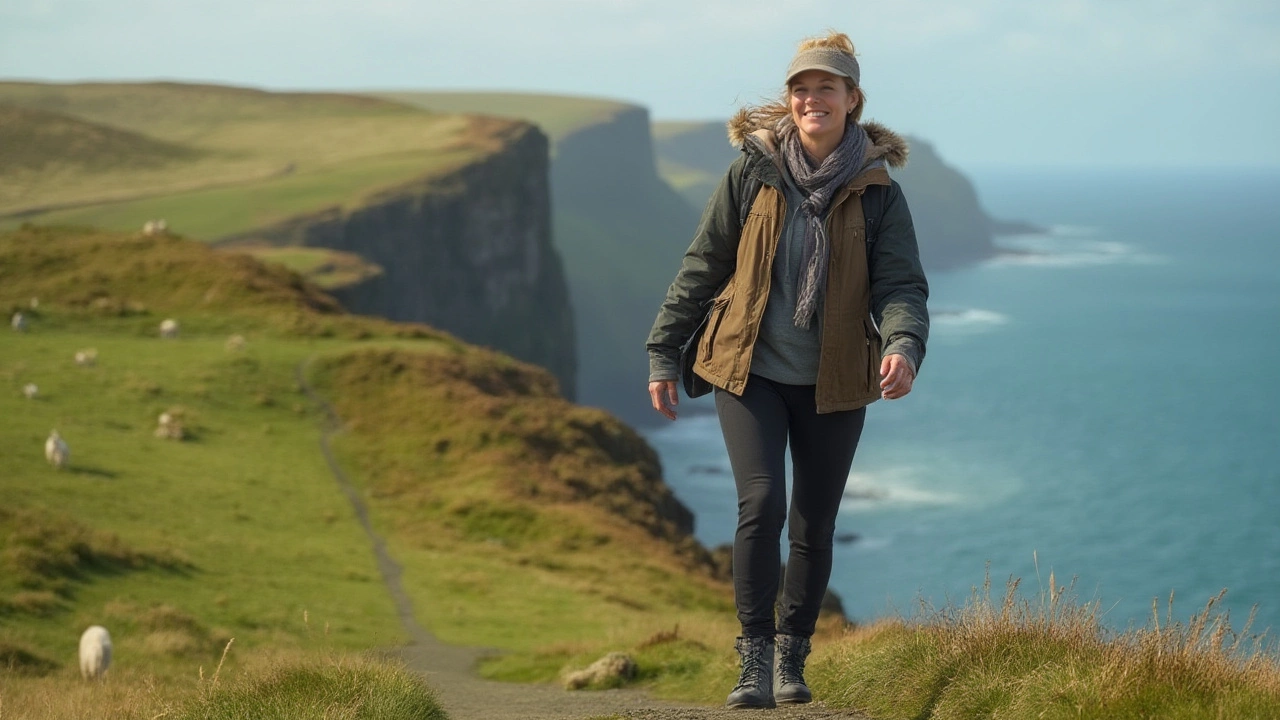Rain blowing sideways, cobbles glistening in Temple Bar, or a spontaneous detour through Glendalough—walking all day in Ireland isn’t just about comfort, it’s about pure survival. Anyone who’s made the mistake of wearing the wrong shoes for a day on the Wild Atlantic Way or dashing to catch the DART knows the result all too well: feet so sore you’re willing to trade your left sock for a lift home. Luckily, comfy shoes are thriving in the Irish market, and living here forces you to become a bit of a shoe connoisseur. What makes a walk-friendly shoe truly perfect for those of us on this soggy, rugged island?
What Makes a Shoe Comfortable for Long Walks in Ireland?
The obvious first offender in Ireland is the weather. We’re not strolling down sunny Mediterranean promenades—think unpredictable showers, chilly mornings, and a healthy mix of country gravel and urban pavement. What you need is a shoe that laughs in the face of rain, shrugs at mud, and sticks to wet paving like a surefooted sheepdog at work.
Start with a grippy, flexible sole. Irish pavement, especially in places like Galway’s Latin Quarter or Limerick’s riverside walks, can turn slick in a heartbeat. Look for rubber outsoles with deep grooves—think of brands like Ecco or even local heroes Dubarry, whose boots double as slip-proof gear and style pieces for a walk through Wicklow or a round in Naas.
Cushioning is your best friend. Hard roads, cobblestones, and forest trails fatigue your feet quickly. Memory foam insoles—like those found in Skechers Go Walk range or in Asics Gel-based sport trainers—work wonders. Orthotic-friendly shoes, such as Vionic, are a big hit among Dubliners who battle city distance on foot daily. For anyone with flat feet or high arches, it’s a good idea to check if the footbed is removable, so you can pop in your custom insoles from your local Foot Solutions or Elverys shop.
Then there’s waterproofing. GORE-TEX or leather uppers help keep feet dry on boggy rounds or unexpected downpours along the Cliffs of Moher trails. Clarks do reliable, water-resistant leather shoes, while Merrell’s Moab series is beloved by weekend hikers heading for Connemara. Look for shoes that balance breathability and protection, so you don’t find yourself sweating after a sudden burst of sun mid-walk.
Fit is everything in comfort. Irish sizing sometimes varies between brands, and even between UK and continental systems, so always try before you buy or check genuine size guides if you’re shopping online. Don’t forget, wider fittings are essential for many here—New Balance, ECCO, and Skechers all have decent options. If you’re picking up a pair in Arnotts or Brown Thomas, ask the staff—they usually know which models suit Irish foot shapes best, since many of us, for genetics or comfort, crave a broader fit.
Durability is the final piece. Those €30 trainers at a discount outlet might look tempting, but constant exposure to Irish weather can destroy poorly made shoes fast. Investing in a quality pair—say, an Irish-made Dubarry Galway boot—can save you cash and blisters in the long run. Genuine leather naturally copes better with our humid climate, while synthetic mesh trainers often wear out quicker. You’ll notice Irish commuters rarely skimp on sturdy footwear; the locals value quality over flash when it comes to surviving a workday or a late-night walk along the Liffey.
Check out this quick breakdown of common shoe features and their Irish relevance:
| Feature | Why It Matters in Ireland |
|---|---|
| Waterproofing | Vital for sudden rain, muddy fields, seaside walks |
| Grip | Prevents slipping on wet stone or pavement |
| Support/Cushioning | Essential for long city or countryside walks |
| Durability | Withstands tough, damp weather year-round |
| Wide Fit Options | High demand locally for comfort, especially in men’s shoes |
| Style & Versatility | Necessary for blending office, pub, and outdoor needs |
Irish retailers like Shuh or Donaghys regularly feature these shoe specs in their bestsellers. So, don’t just grab the prettiest sneaker in the shop—make sure it’s made for what life in Ireland actually throws at your feet.

Best Types of Shoes for All-Day Walking in Ireland
Your needs switch depending on where you’ll be walking. In cities like Dublin or Cork, you want shoes tough enough for endless footpaths and bus stops, but smart enough not to look out of place if you end up in a snug at the end of the day. The rules change when you’re out in Killarney’s woodlands or scrambling up Bray Head with the wind in your face.
Comfortable walking shoes Ireland is more than a search term—it’s a mission for anyone living here. Trainers and sneakers are the day-to-day go-tos. Adidas Supernova or Nike Air Zoom Pegasus provide springy soles that make city marathons (or shopping sprees on Henry Street) a breeze. If work means standing and moving for long stretches, look for Skechers Arch Fit or Clarks Un Loop, both well-loved by nurses and retail staff in Ireland for blending support and presentable style. Many Dubliners rave over Asics’ Gel-Contend range for combining a sporty look with pillowy comfort, great whether you’re doing laps in Phoenix Park or just dashing up the quays.
Leather boots—especially waterproof ones—are a local staple, especially autumn through spring. Dubarry’s Galway boot tops lists for countryside wanderers and city-goers alike, with a reputation proven in wet grass and slick city stone alike. Blundstone, an Australian brand but hugely popular in Ireland, has become almost an unofficial uniform for music festivals, farmers’ marts, and design studios across Galway and Kilkenny. Tough, slick, built for weather.
Wider feet are a thing here, not just a myth from your granny. Many Irish brands, and global ones sold here, offer wide-fit models for walking shoes and boots. New Balance 880 and Ecco Soft 7 both thrive for this reason—they’re easy to find in local shops, and you’ll actually enjoy your pub crawl from Howth to Monkstown without cursing your toes.
Ladies, ballet flats or dress shoes might seem handy, but unless you’re hopping from taxi to meeting, they rarely make sense for long treks. Instead, try Gabor or Ecco flats with memory foam or arch support. Also, trainers with a muted look, like Adidas Grand Court, transition easily from school run to brunch in Ballsbridge. For lads, don’t overlook loafer-style trainers or hybrid oxfords with sneaker soles from Bugatti or Geox—ideal for office-to-outdoor living. And if you’re a fan of Irish sports, don’t shy away from GAA-branded trainers either; some, like the O’Neill’s ranges, actually pack decent comfort for pounding up Croke Park steps or rural parish roads.
Hiking shoes deserve a mention. Merrell, Salomon, and Columbia—each has a cult following among hikers on Ireland’s national walking trails. Waterproof, rigid-soled hiking trainers or boots offer ankle support, great for uneven sheep-paths or surprise boggy stretches. If you’re planning to tackle Dingle Way or any of the Wicklow Way, invest in a true outdoor shoe, and break them in before you go. Don’t forget: Irish festivals often mean standing on your feet for hours—think Electric Picnic or the Cork Jazz Festival. Festivals are notorious for churning up muddy fields, so a tough, water-resistant shoe with a removable insole (to dry overnight) becomes your best friend.
Here’s a list of the most popular comfortable shoe types for daily Irish walking, with handy pointers:
- Waterproof trainers: Merrell, Skechers, New Balance (look for options labelled ‘GORE-TEX’ or ‘Hydromax’)
- Supportive slip-ons: Clarks Unstructured range, Vionic
- City-friendly boots: Dubarry Galway, Blundstone, Timberland
- Wide-fit running shoes: Asics, Ecco, New Balance 880V12
- Hybrid sneakers: Geox Nebula, Adidas Grand Court
- Proper walking/hiking shoes: Salomon X Ultra 4, Columbia Escape Thrive, Meindl Dublin GTX
Don’t be surprised if you see people in town on a Friday evening sporting their hiking boots—no one blinks an eye if it’s wet or you’ve a few hours of standing ahead. “Smart casual” in Ireland almost always allows for sturdy shoes if the clouds are looming (which is most days).

Practical Tips for Picking & Caring for Your Walking Shoes in Ireland
Before you run to order online, there are a few simple rules Irish walkers swear by. Always try shoes on later in the day, when your feet are slightly swollen (true for nearly everyone, not just after a long ramble on Grafton Street). This mimics how your feet will fit after hours on them. If trying on in-store, wear the socks you’ll use most—wool or moisture-wicking synthetics are better than cotton, which gets clammy once it’s wet (and it’ll get wet).
Break in your shoes gradually. Even the comfiest new walkabout shoe has a few pressure points fresh from the box. Try short strolls in the Phoenix Park or along Salthill promenade before setting out on any marathon pub-hopping or Bray-to-Greystones walks. A day hike to Powerscourt Waterfall is not the time to debut fresh leather boots.
Caring for your shoes matters—thanks to Irish weather, wet shoes left overnight will never dry in time for tomorrow’s plans. Use old newspaper stuffed inside to soak up moisture, and don’t toast them too close to radiators or open fires, or you’ll crack the material. Waterproof spray or wax is worth the few euro, especially for leather. Shops like Great Outdoors in Dublin and Portwest in Galway stock these, and a single treatment every few weeks keeps your favorite pair lasting much longer.
If you’ve got problem feet—think bunions, plantar fasciitis, or just plain old tiredness—check for shoes with removable insoles and a roomy toe box. You can get advice from podiatry services in most large towns, and sometimes, the best fix is a good insole swapped in. Many Irish pharmacies also stock gels and supports now, no prescription needed.
Remember, Irish fashion trends have shifted: trainers, boots, and sportier styles are now accepted in loads of workplaces and events. At places like St. Stephen’s Green Shopping Centre, you’ll spot women and men in stylish, comfort-first shoes, no matter if they’re headed to class, meetings, or a friend’s house up the coast. Matching your shoe with the right outfit is, yes, important—but nobody here will mock you for swapping heels for runners in a downpour. Most locals do, and quietly pity anyone who cares more about style than dry, pain-free toes.
After years living here, if there’s one piece of advice I’d pass on, it’s this: invest in a shoe that’s as sturdy as it is forgiving. Whether you’re exploring Doolin’s clifftops or braving the Christmas shopping crush, your feet will thank you.
